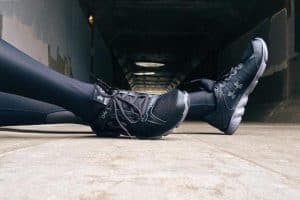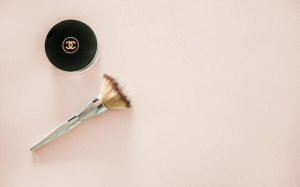Nothing beats a reliable and comfortable outfit at work or on the go. Workwear staples Carhartt and Dickies have been producing durable products for decades. They have clothed generations of working men and women. Ultimately, their quality apparel must be something keeping them going strong after all this time. However, they vary significantly in appearance, quality, and cost. This article compares and contrasts Dickies vs Carhartt workwear brands, detailing their histories and styles, among other things.
Dickies vs Carhartt- Overview
The Williamson-Dickie Mfg. Co. is a clothing manufacturer known for its most popular label, Dickies. In 1922, C. N. Williamson and E. E. “Colonel” Dickie started the company in Fort Worth, Texas, selling denim bib overalls to farm and ranch workers in the Southwestern United States. Dickies, founded in 1889, is now a worldwide icon, sold in over a hundred countries and supplying the likes of the auto, hospitality, construction, and healthcare sectors with high-quality workwear.
American clothing manufacturer Carhartt, Inc. has been around since 1889. It’s best known for its durable workwear like Carhartt jackets, Carhartt coats, Carhartt overalls, Carhartt coveralls, Carhartt vests, Carhartt shirts, Carhartt jeans, Carhartt dungarees, and Carhart Based in Dearborn, Michigan, Hamilton Carhartt’s heirs still run Carhartt.
Offices, Stores, and Employees
Today, you can buy a pair of Dickies in every one of the 50 states in the United States, as well as in dozens of other countries around the world, including Saudi Arabia, South Africa, Australia, South Korea, Russia, Chile, Japan, Taiwan, Iceland, France, Canada, Germany, France, Italy, Croatia, the Philippines, Poland, and Mexico. It’s also sold in Ireland (through COH Sales Ltd.).
The United States, Mexico, and Europe are all home to Carhartt’s international offices. The UFCW represents 970 of our more than 2,700 American employees. American workers served as inspiration for Carhartt’s Made in the USA collection, which includes some of the most recognizable styles. The company manufactures these items at four separate facilities in Kentucky and Tennessee. Although Carhartt’s European headquarters are in Amsterdam, the company also has manufacturing and finishing facilities in Mexico. The company has more than 5,300 dedicated employees spread across 190 different countries.
Popular Materials and Designs
Work pants and other items from Dickies are typical examples of the polyester/cotton blends used to make Dickies clothing. Dickies employs cutting-edge technologies and materials for their workwear, including water-resistant fabrics. The brand’s fabrics are highly adaptable and breathable, so you can work and play outside without feeling restricted or worrying about sweaty, musty odors.
Popular Dickies designs include:
- Dickies Men’s Short Sleeve Heavyweight T-Shirt
- FLEX Regular Fit Straight Leg Tough Max Duck 5-Pocket Pants
- FLEX Regular Fit Straight Leg Cargo Pants
- Dickies Men’s Original 874 Work Pant
- Relaxed Fit Workhorse Double Knee Denim Jeans
In 1915, Carhartt introduced its now-iconic Duck fabric. Rail workers praised it for its long life and airy comfort. Duck fabric, however, is easily damaged by the absorption of water, so it must be paired with moisture-wicking or water-repellent materials for use outdoors. Since there are many applications for Duck fabric, Carhartt has developed several material variations. Carhartt also heavily employs the Force Extremes® 37.5® Technology in their wares. It can help keep you at a comfortable temperature, resist odors, and dry more quickly than other fabrics.
Popular Carhartt designs include:
- Engineers Sack Coat (Chore Coat)
- Carhartt Men’s Midweight Sleeve Logo Hooded Sweatshirt
- Carhartt Men’s Quilt Lined Zip-To-Thigh Bib Overalls R41
- Rugged Flex Utility Double Front Jean
- Carhartt Non-Denim Work Pant
Now we delve into the Dickies vs Carhartt history.
Dickies History
How It All Started
C.N. Williamson and E.E. Dickie got their start in the “vehicle and harness” business in Texas before they founded the renowned workwear brand Dickies. Also, prosperous business people, the cousins had spent the previous quarter century selling hats in Texas’s southwest territory. They entered the workwear market in 1918 by forming the U.S. Overall Company with some friends. The Williamson-Dickie Manufacturing Company was renamed in 1922. Williamson-early Dickie’s success was stunted only by the Great Depression, and the company made millions of uniforms for the U.S. military during World War II. After the war, Williamson shifted to civilian production and began a policy of nationwide expansion, opening factories, distribution centers, and sales offices all over the United States.
Let’s Go International!
Williamson-Dickie went global in the 1950s by penetrating markets in Europe and the Middle East- where Texan oil field workers popularized Dickies among workers in the region’s oil fields. The company eventually expanded into foreign countries. Oil field workers were instrumental in introducing Dickies to the Middle Eastern market. This market also prompted the company’s entry into Europe. Until the 1970s, Dickies only offered men’s workwear. At the start of the 1980s, however, the company made the strategic decision to expand into the female and juvenile markets. The current logo is very similar to the one used in the 1970s. Even today, a horseshoe can be seen in the background of the blue or white stylized rectangle that serves as the Dickies logo.
Buy Others to Grow Big
Canadian Kodiak Group Holdings Inc. was purchased by Williamson-Dickies in 2008. The company’s acquisition spree continued in 2013 when Dickies bought out Walls. Jerry Leigh of California took over the licensing rights for juniors’ Dickies clothing in 2014. Williamson-Dickie was purchased by VF Corporation for $820 million in 2017. Williamson-Dickie Europe Ltd is located in Westfield, Somerset, in the United Kingdom. For both workwear and streetwear, this division of the company—previously known as Dickies UK—now serves the whole of Europe and the Middle East. A capsule collection designed by Dickies and Japanese label FACETASM was released in June 2020.
Carhartt- History
This section explores the history behind Carhartt.
Big Opportunity in Railroad Workwear
Hamilton Carhartt started the company in 1889 in Detroit, Michigan, to produce durable workwear for the local labor force. In a loft in a nondescript part of Detroit, Carhartt began producing uniforms for railroad workers using only the most basic equipment. The company’s initial resources were five employees and two sewing machines. “Honest value for an honest dollar” was Carhartt’s original tagline. Starting in the 1890s, the company expanded in response to the demand for durable workwear among railroad workers. Carhartt consulted with railroad workers in the area to develop a working bib that would be useful to them.
Worldwide Expansion
In 1910, Carhartt began its domestic and international expansion. It hosted seminars in cities like Atlanta and Dallas. The cities of Liverpool and London, as well as Toronto and Vancouver in Canada, all housed Carhartt mills. The bib overall is just one example of a modern garment with a long and storied past. Posters advertising the now-iconic Carhartt Chore Coat can be found in the Carhartt Archive as early as 1917. All these years later, the coat has changed little.
New Strength After the Great Depression
During the infamous Stock Market crash and Great Depression, Carhartt was forced to downsize due to falling sales, but the company saw a resurgence during World War II. In 1937, Hamilton passed away, and his son Wylie took over as president. The “Back to the Land” initiative, in which Wylie was instrumental, resulted in several new businesses in outlying areas of Kentucky. The original Irvine, Kentucky factory, built in 1932, now serves as the operations center for Carhartt’s supply chain and is one of four sewing and cutting facilities in Kentucky and Tennessee. In the early 1930s, Wylie helped develop Carhartt’s first outdoor clothing lines, including the Super Dux and Super Fab hunting collections.
It’s a Family Affair
Gretchen Carhartt, Wylie’s daughter, married Robert Valade, who became CEO of the company in 1958. In 1972, Robert Valade, Gust Feles, and Don Rasinen, then Carhartt’s Vice President of Sales and Executive Vice President of Manufacturing, formed a core that would revolutionize the company. After investing in state-of-the-art production facilities, they could secure substantial private-label business with department stores like Sears, J.C. Penney, and Montgomery Ward. This allowed Carhartt to generate the money it needed to keep increasing production. The Active Jac, a rugged hooded jacket introduced by Carhartt in 1975, is still the brand’s best-seller.
Celebrity Push
In the 1970s, when the Alaska Pipeline was being built, the company received many orders that contributed to the company’s expansion. These orders proved that Carhartt’s products could withstand and even thrive in the harshest environments on Earth. In the 1980s and 1990s, Carhartt became well-known among shoppers who weren’t necessarily involved in blue-collar professions. Rappers and other celebrities in the hip-hop industry popularized the brand by wearing Carhartt. Due to growing demand in Europe, Carhartt launched the Work In Progress line in 1989 to cater to European and Asian customers who appreciate high-quality products that stay true to the brand’s original aesthetic while still being functional.
New Tech Era
Mark Valade, Hamilton’s great-grandson, took over as Carhartt’s president in 1998. Mark oversaw our expansion into Europe and our international e-commerce platform launch. The company introduced a comprehensive line of products for women, a large number of our retail locations, and a highly successful line of flame-resistant clothing. Carhartt also came up with new technologies, such as Carhartt Force®, Carhartt Force Extremes®, Quick Duck, Rain Defender®, and Storm Defender®. Linda Hubbard became the company’s president in 2013, making her the first person outside the Hubbard family to hold the position. Chairman emeritus Gretchen C. Valade continues to serve alongside her son, current CEO Mark Valade. Hamilton and the succeeding three generations of the Carhartt family built a business that has endured because of their foresight and tenacity as entrepreneurs.
So, Which Brand in the Dickies vs Carhartt Debate Is Better?
Both the Dickies and Carhartt names are well-known in the workwear world, and both have a solid track record of producing durable clothing and equipment for workers. It’s difficult to say that one brand “surpasses” the other when comparing Dickies vs Carhartt. They are both durable, dependable, and crafted from plush, high-quality materials that will last a while. Both brands offer very competitive prices and quality. The two labels produce high-quality clothing. Almost identical, but our experts find Dickies to be slightly less expensive. You can’t go wrong with either of the two leading work clothing brands. Colorful and adaptable, Dickies is the brand for you if you’re into that sort of thing. Carhartt, however, adheres to a more traditional aesthetic; its merchandise is mostly unpatterned and solid in color.







